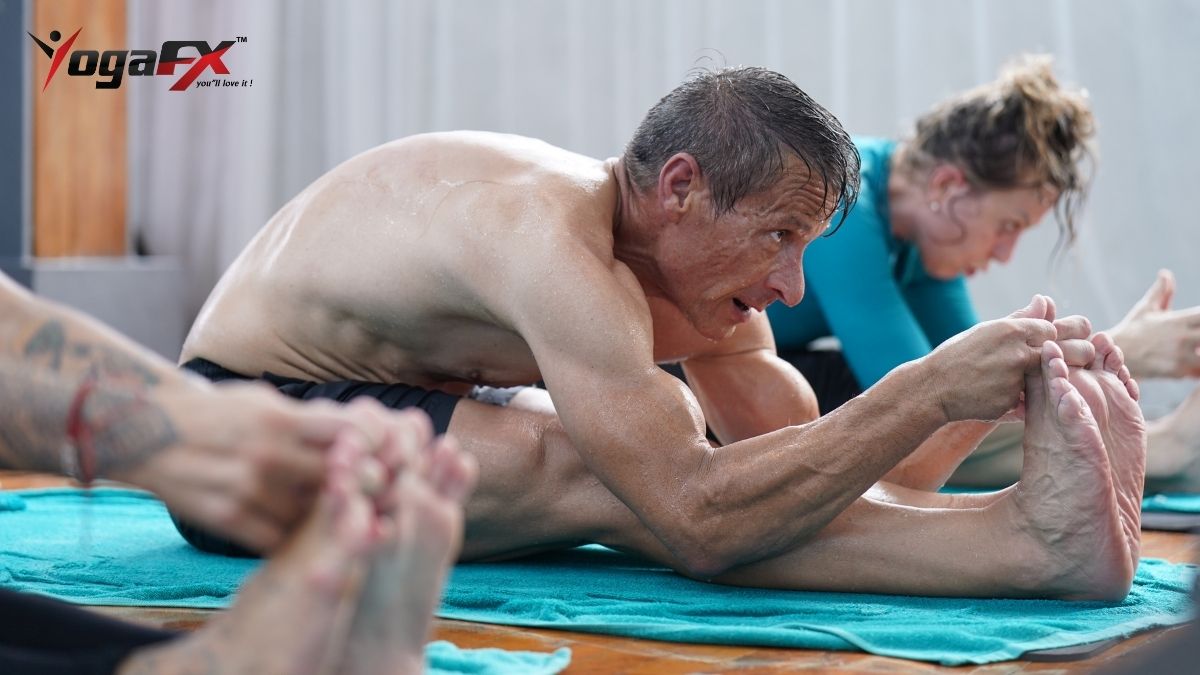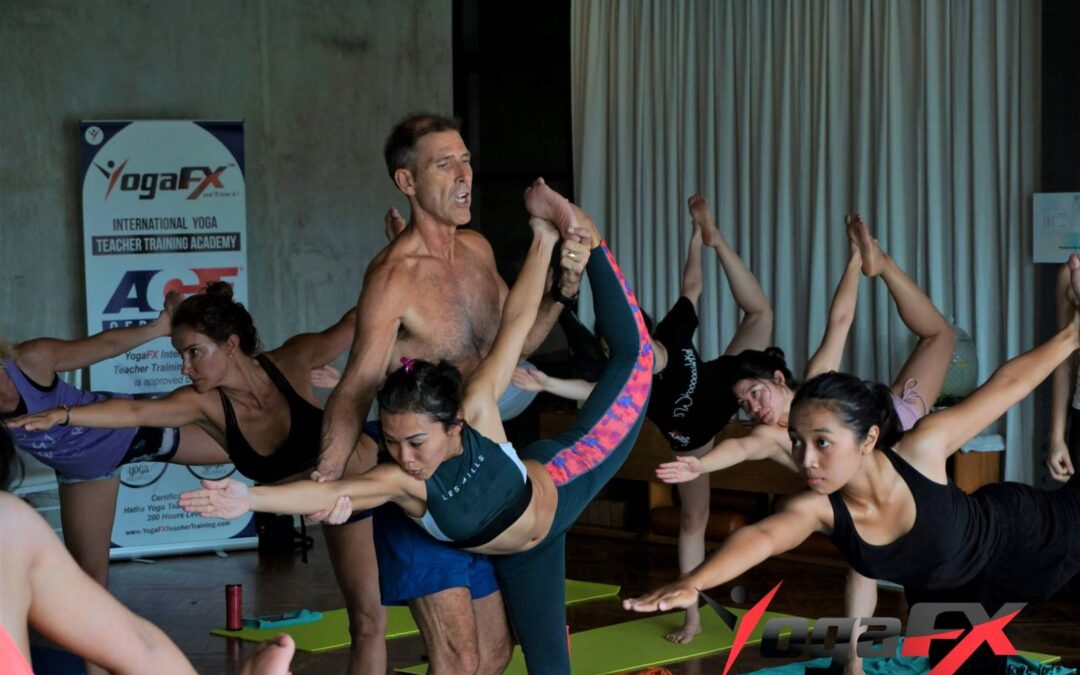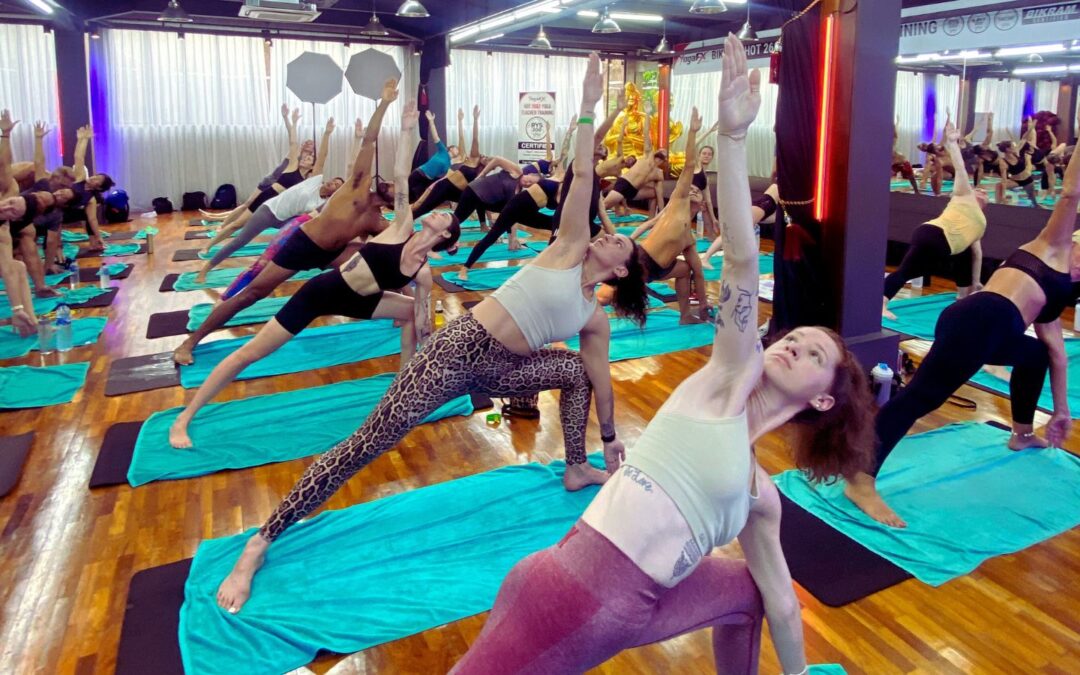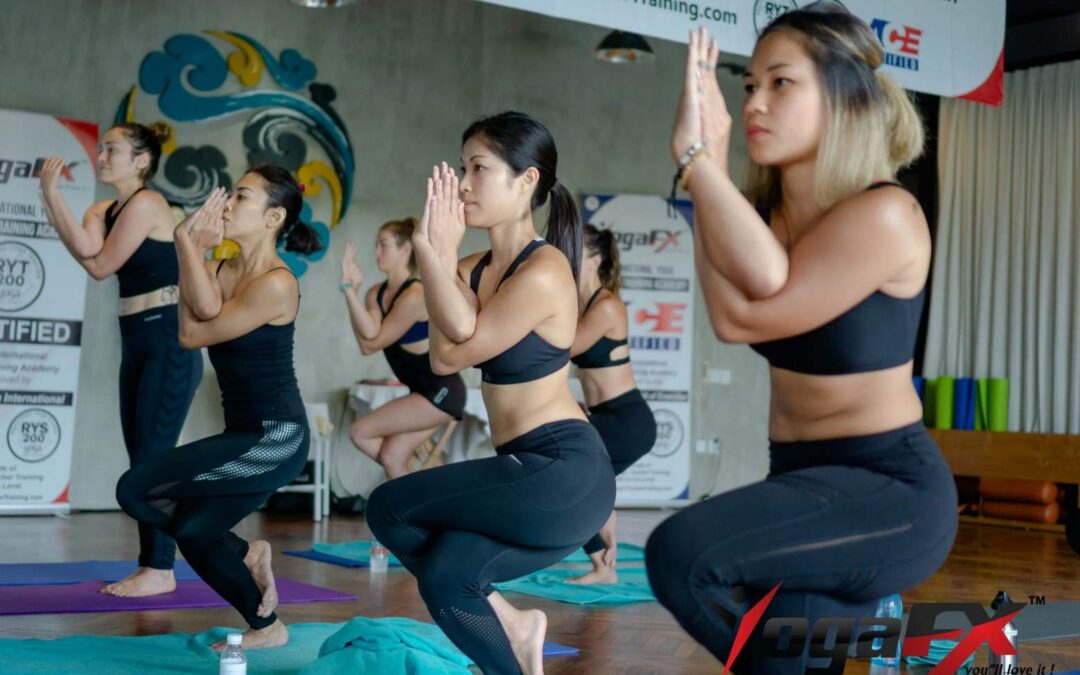Imagine walking into a warm, almost tropical room, feeling the heat wrap around you like a comforting hug. The air is thick, your heartbeat picks up, and before you even start moving, you know—this is going to be different. Bikram Yoga isn’t just about stretching or holding poses; it’s a challenge, a journey, and for many, a complete transformation.
But why do people keep coming back, sweating through the same 26 poses in a 105°F room? What makes this practice so powerful that some say it changes not just their bodies, but their entire mindset? Some do it for flexibility, others for strength, and many swear by its ability to burn fat, ease stress, and heal injuries. The truth is, Bikram Yoga isn’t just about exercise—it’s about pushing limits, building discipline, and unlocking something deep inside.
So, how does it work? Why is the heat so important? And what happens when you commit to this practice, day after day? Whether you’re just curious or thinking about stepping into your first class, understanding Bikram Yoga is the first step. Let’s dive in and uncover why so many people believe this is the ultimate yoga experience.
What is Bikram Yoga?
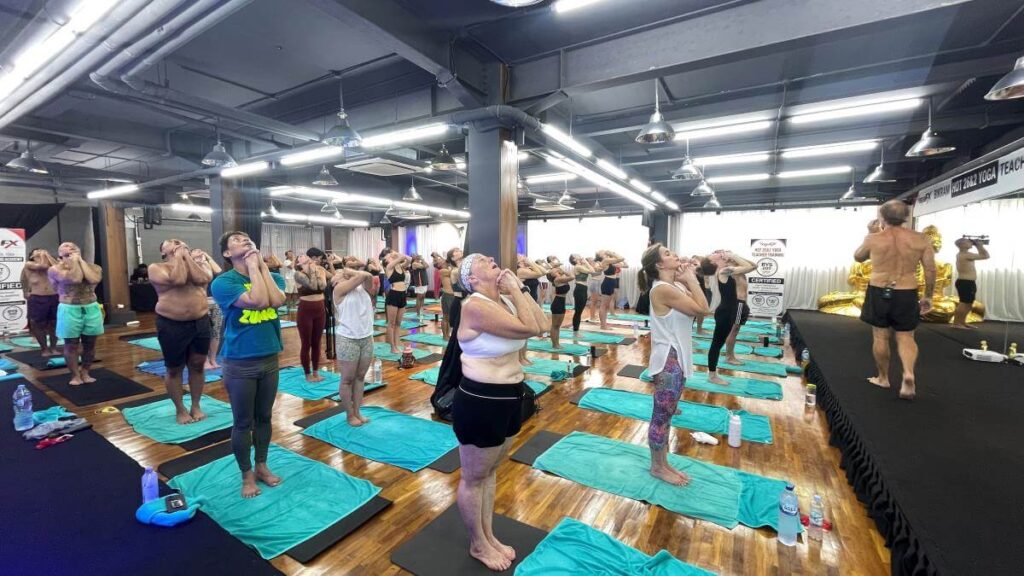
Bikram Yoga is a special kind of yoga that follows a set routine. Every class is exactly 90 minutes long, with the same 26 postures and two breathing exercises, all done in a room heated to 105°F (41°C) with 40% humidity. It’s not just any yoga—it’s the original hot yoga, designed to work your entire body from head to toe.
This method was created by Bikram Choudhury and became famous worldwide, with thousands of studios opening across the globe. The heat isn’t just there to make you sweat—it helps your muscles stretch, reduces the risk of injury, and makes your body work harder, leading to deep detoxification and faster results.
Unlike other yoga styles that change from class to class, Bikram Yoga is always the same. The predictability helps you measure progress, focus on improving each pose, and develop both mental and physical strength. It’s challenging, but that’s exactly why people love it. Every time you step onto the mat, you push yourself a little further—and the results can be life-changing.
The Bikram Yoga Beginning Series is carefully designed to work the entire body systematically, making it perfect for beginners. Each class follows a structured routine:
- A standing pranayama to prepare the lungs.
- A standing sequence that builds strength, flexibility, and balance.
- A savasana (resting pose) to regulate the heart rate and calm the mind.
- A floor sequence focusing on deep stretching and spine alignment.
- A final kapalabhati breathing exercise to detoxify the body and improve oxygen flow.
If you’re new to yoga, don’t worry about getting the postures perfect right away. Many beginners struggle in their first few classes, but that’s completely normal. It usually takes about 3 to 5 sessions for your body to adjust, find balance, and understand the postures. The key is to keep showing up, listen to your body, and trust the process. With time, your strength, flexibility, and confidence will grow—and soon, the postures that once felt impossible will start to feel natural.
Bikram Yoga Health Benefits
Bikram Yoga isn’t just about stretching or sweating—it’s a powerful tool for both physical and mental transformation. Imagine being in a yoga class where the temperature is 105°F (41°C) on purpose. The heat and humidity create an intense yet deeply therapeutic environment, allowing your body to move in ways that feel impossible in a normal room.
Beyond flexibility and strength, science backs the benefits of Bikram Yoga, especially for mental health. A randomized controlled trial published in the Journal of Clinical Psychiatry (Oct. 23, 2023) found that hot yoga significantly reduces depression symptoms. In the study, 65 adults with moderate-to-severe depression (ages 18-60) were divided into two groups. One group attended at least two 90-minute hot yoga classes per week for eight weeks, while the other group was placed on a waiting list.
The results? 60% of yoga participants experienced a 50% or greater reduction in depression symptoms, compared to only 6% in the wait-listed group. Some participants improved even if they averaged just one class per week. While the study didn’t compare hot yoga to other yoga styles, it suggests that Bikram Yoga can be a powerful complement—or even an alternative—to medication for managing depression. However, if you have heart conditions or other health concerns, it’s always best to consult your doctor before starting.
Bikram Yoga for Weight Loss
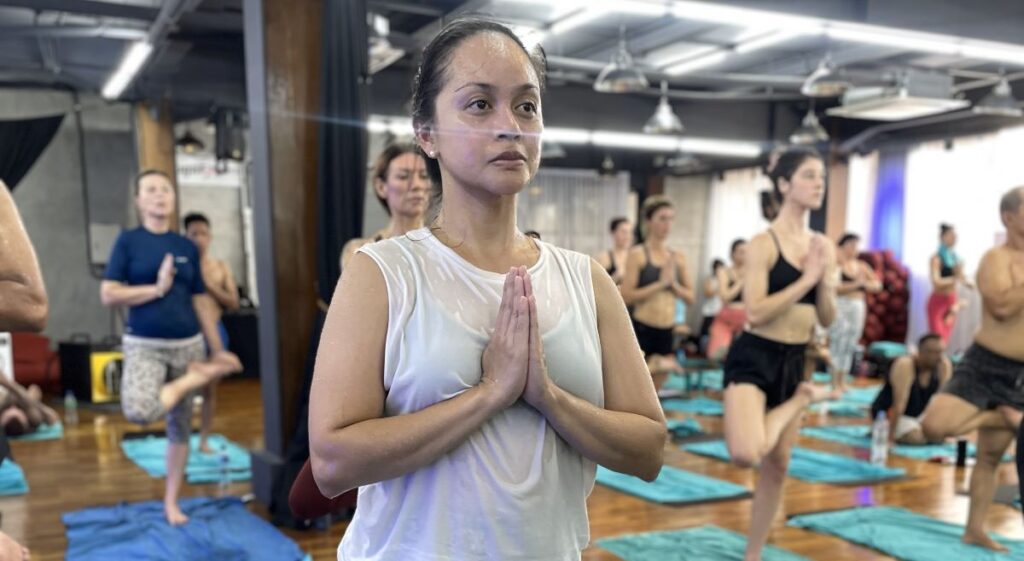
Beyond mental health, Bikram Yoga is also known for its fat-burning effects. In just one 90-minute class, you can burn anywhere between 500 to 1,000 calories, depending on your intensity level, body weight, and effort. The combination of heat, movement, and controlled breathing boosts metabolism, increases cardiovascular endurance, and activates deep muscle engagement—all of which contribute to fat loss and body sculpting.
Unlike other workouts, Bikram Yoga doesn’t just help you burn calories during class. The practice stimulates your metabolism, so your body continues to burn calories even after you step off the mat. Over time, many practitioners notice a leaner, more toned body, improved muscle definition, and better digestion—all key factors in long-term weight management.
Whether you’re looking to relieve stress, improve mental clarity, or shed unwanted weight, Bikram Yoga offers a structured, science-backed approach that transforms both mind and body.
How to Prepare for Your First Bikram Yoga Class
Bikram Yoga is challenging but incredibly rewarding—especially if you know what to expect. The heat, the sweat, and the intensity might feel overwhelming at first, but with the right preparation, your experience will be much smoother. Here’s how to get ready:
Before the Class
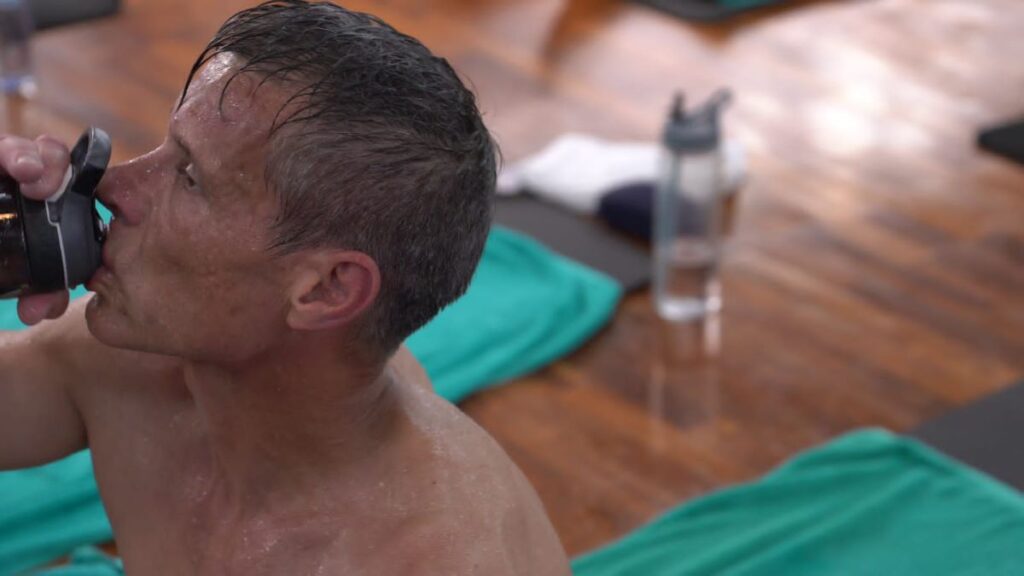
✔ Drink Up – Hydration is key! Start drinking plenty of water at least a few hours before class. If you show up dehydrated, you’ll struggle to keep up with the heat. Electrolytes can also help replace minerals lost through sweat.
✔ Dress to Sweat – Wear light, moisture-wicking clothes that allow movement. For women, a sports bra and shorts or leggings work best. For men, shorts and a tank top (or no shirt) are common. Avoid baggy clothes, as they trap heat and sweat, making the class feel even hotter.
✔ Arrive Early – Get to the studio at least 15 minutes before class starts. This gives you time to find a good spot, adjust to the heat, and mentally prepare. Choose a spot near the back or middle of the room so you can watch experienced students for guidance.
During the Class
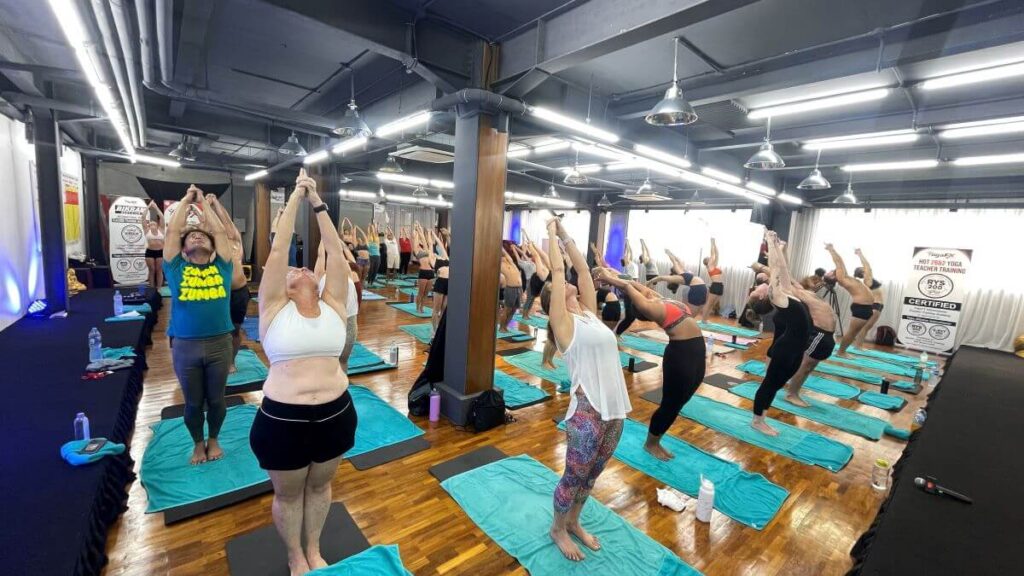
✔ Stay in the Room – No matter how intense it gets, try to stay inside the heated room. Your body needs time to adjust, and stepping out can disrupt the process. If it feels overwhelming, just take a break in savasana (lying flat on your mat).
✔ If You Feel Dizzy, Lay Down – Feeling lightheaded is normal in your first few classes. Instead of pushing through, simply lie down on your back and focus on slow, deep breathing. The feeling will pass, and you can rejoin when ready.
✔ If You’re a Beginner, Follow the People in Front of You – No need to stress about doing every posture perfectly. Watch experienced practitioners and follow their movements. With time, your body will adjust, and poses that felt impossible will start to feel natural.
After the Class
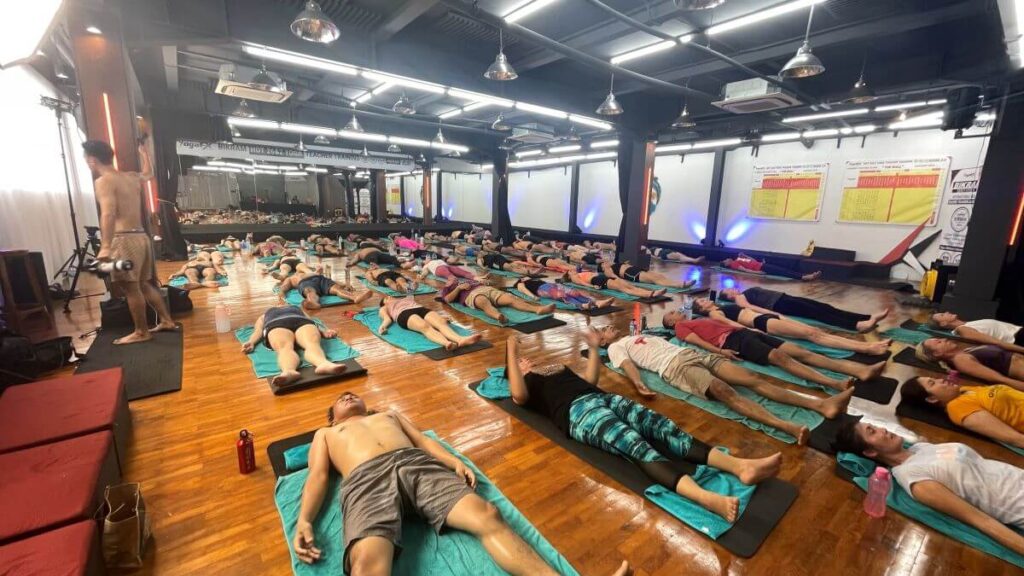
✔ Rehydrate – You’ve lost a lot of fluids, so drink plenty of water after class. Adding electrolytes can help replenish essential minerals.
✔ Eat Light – Your body is still processing the workout, so go for light, nutritious meals like fruits, vegetables, or a smoothie. Avoid heavy, greasy foods, as they might make you feel sluggish.
✔ Rest and Recover – It’s normal to feel tired, but also energized after class. Listen to your body—if you need rest, take it. If you feel great, enjoy the post-yoga clarity and relaxation.
The first few classes might feel tough, but don’t give up! After 3 to 5 sessions, your body will adjust, and you’ll start feeling the real benefits. Stick with it, stay patient, and trust the process!
Bikram Yoga vs. Other Yoga Styles: What’s the Difference?
Yoga comes in many forms, each with its own rhythm, intensity, and purpose. While all yoga practices aim to improve flexibility, strength, and mindfulness, Bikram Yoga is unique because of its fixed sequence, heated environment, and structured approach. Let’s take a closer look at how it compares to other popular yoga styles.
Bikram Yoga vs. Hot Yoga
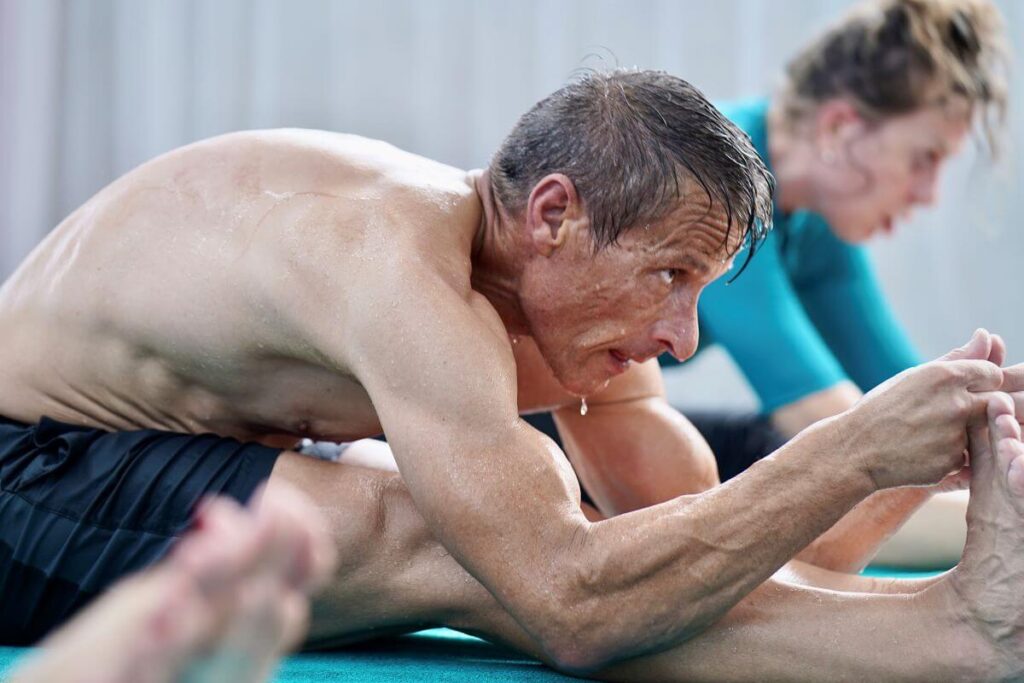
At first glance, Bikram Yoga and Hot Yoga may seem identical—they are both practiced in a heated room. However, the main difference lies in the structure and consistency of the practice.
- Bikram Yoga follows a strict sequence of 26 postures and 2 breathing exercises, practiced in the same order every time. The room is always heated to 105°F (41°C) with 40% humidity, designed to mimic the climate of India, where yoga originated.
- Hot Yoga is more flexible. Teachers can design their own class flows, incorporate different postures, and even play music. The heat levels vary depending on the studio, and some Hot Yoga classes include dynamic movements rather than static holds.
If you prefer a predictable and disciplined practice that allows you to track progress, Bikram Yoga is the way to go. But if you enjoy variety and creative sequences, Hot Yoga may be a better fit.
Bikram Yoga vs. Hot Pilates
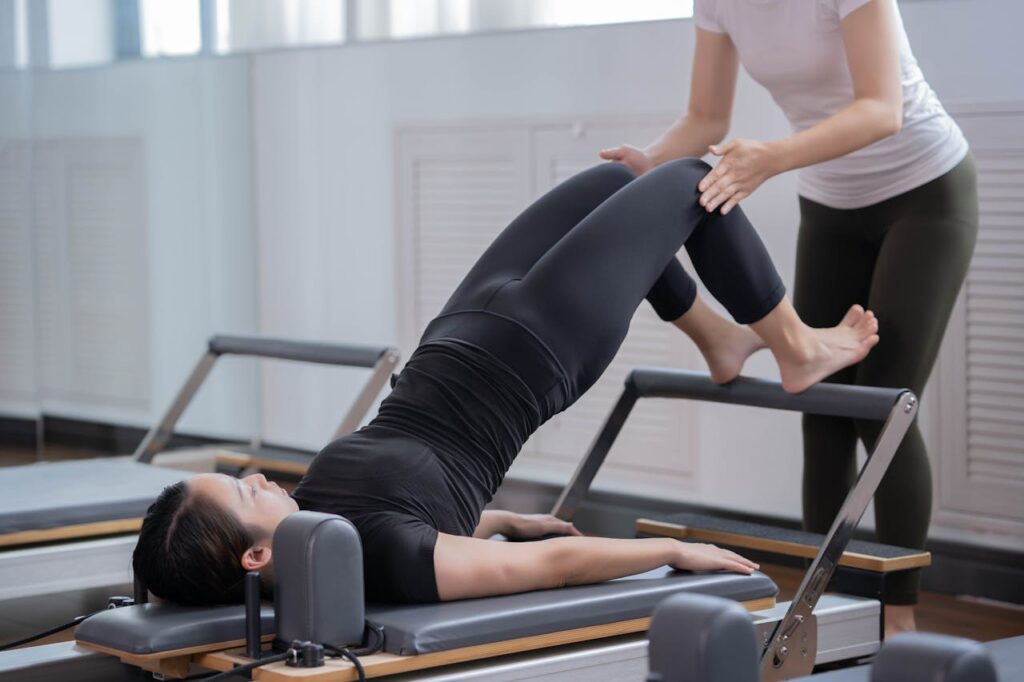
Though both are done in a heated room, Bikram Yoga and Hot Pilates have completely different goals.
- Bikram Yoga focuses on flexibility, strength, and detoxification through controlled poses and deep breathing. The practice engages every muscle in the body while encouraging mental discipline.
- Hot Pilates is a high-intensity workout that focuses on core strength, endurance, and toning. It incorporates quick movements, repetition, and sometimes resistance bands or weights, making it more of a fitness class than a traditional yoga practice.
If you’re looking for a low-impact, meditative practice that improves flexibility and mental clarity, Bikram Yoga is ideal. If you want a fast-paced workout to burn fat and strengthen muscles, Hot Pilates might be more suitable.
Bikram Yoga vs. Vinyasa Yoga
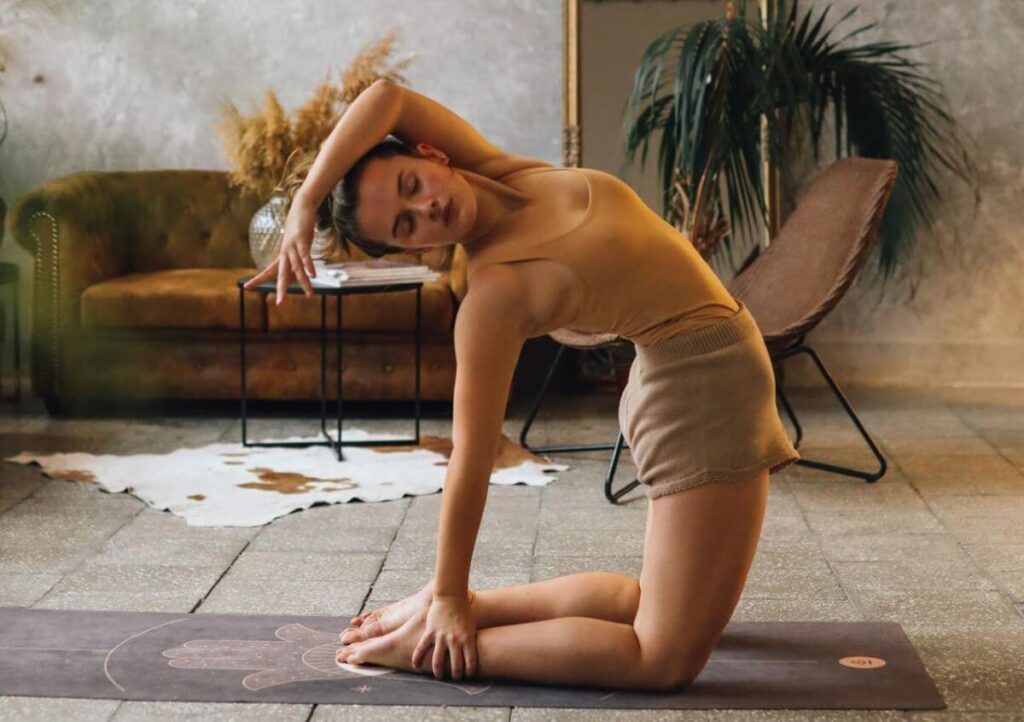
Vinyasa Yoga, often called “flow yoga,” is one of the most popular yoga styles today. It focuses on continuous movement, synchronized with breath, creating a dynamic and dance-like flow.
- Bikram Yoga follows a fixed routine, while every Vinyasa class is different. There’s no set sequence in Vinyasa—teachers can design unique flows for each session.
- Bikram Yoga is slow and precise, with each pose held for a set time to deepen flexibility and strength. Vinyasa is faster-paced, transitioning fluidly from one posture to the next.
- Bikram Yoga is always practiced in extreme heat (105°F), while Vinyasa can be done in normal or warm temperatures.
If you enjoy structure, repetition, and a deep stretch, Bikram Yoga will challenge you in a unique way. If you prefer variety, creative movement, and a more playful approach, Vinyasa might be a better fit.
Bikram Yoga vs. Ashtanga Yoga

Both Bikram Yoga and Ashtanga Yoga have a fixed sequence, but they are very different in execution and intensity.
- Bikram Yoga consists of the same 26 poses and 2 breathing exercises, practiced in a heated room. The focus is on holding postures to improve flexibility and endurance.
- Ashtanga Yoga follows a structured, six-series system that increases in difficulty. It is a more physically demanding practice that incorporates continuous movement, arm balances, and deep backbends. Unlike Bikram, it is practiced at room temperature.
If you want a disciplined, heat-based practice that emphasizes flexibility and endurance, Bikram Yoga is ideal. If you’re looking for a physically intense, strength-building practice with progressive challenges, Ashtanga Yoga offers a more advanced approach.
Bikram Yoga vs. Regular Yoga (Hatha Yoga)
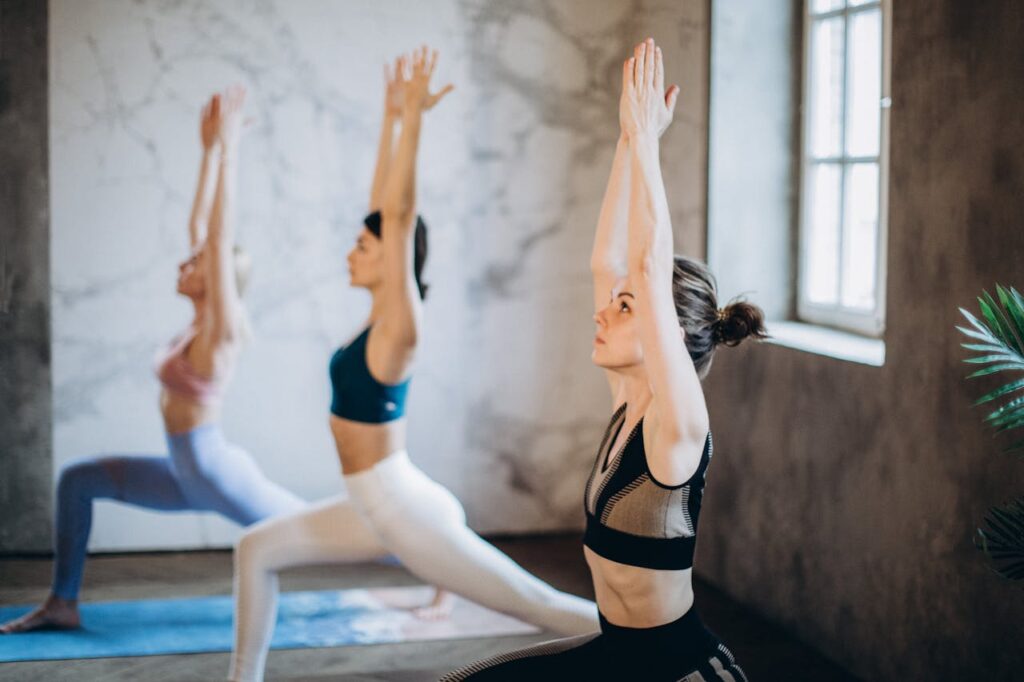
When people refer to “regular yoga,” they often mean Hatha Yoga, which is the foundation of many modern yoga styles.
- Bikram Yoga follows a strict 90-minute routine with specific poses in high heat. It is designed for a full-body detox, deep stretching, and mental discipline.
- Hatha Yoga is gentler and more adaptable. Classes vary based on the instructor, focusing on breathing techniques, gentle stretching, and relaxation. It is usually practiced at room temperature, making it less intense but more accessible for beginners.
If you’re looking for a high-intensity, structured practice that challenges both mind and body, Bikram Yoga offers a transformative experience. If you want a slower, more meditative introduction to yoga, Hatha Yoga is a great starting point.
Which One is Right for You?
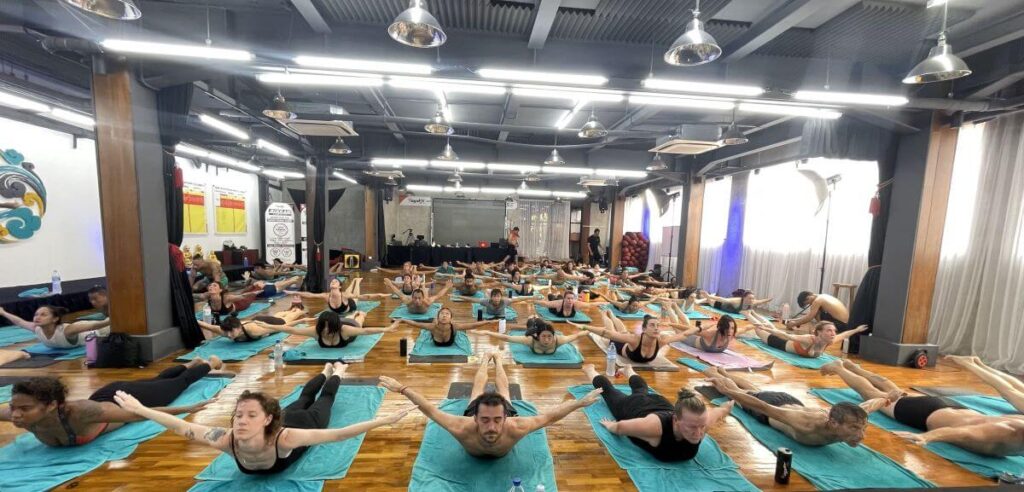
All yoga styles have unique benefits, but Bikram Yoga stands out for its consistency, discipline, and heat-based intensity. If you’re someone who thrives on routine, enjoys a challenge, and wants a deeply detoxifying practice, Bikram Yoga might be exactly what you’re looking for.
However, if you prefer variety, a faster pace, or a strength-focused workout, other styles like Vinyasa, Ashtanga, or Hot Pilates might be a better fit. The best way to decide? Try them out and see which one feels right for you!
Take Your Bikram Yoga Practice to the Next Level
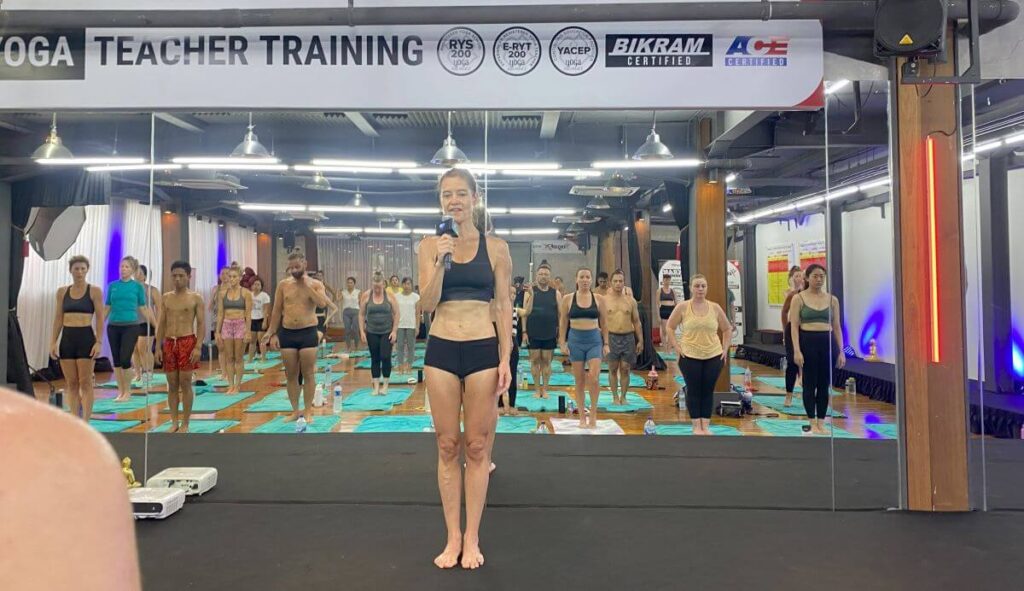
Bikram Yoga is more than just a workout—it’s a mind-body transformation. Whether you’re looking to improve flexibility, build strength, reduce stress, or even lose weight, this original hot yoga practice offers something truly unique. The structured sequence, heated environment, and mental discipline make it one of the most effective forms of yoga for overall well-being.
Many people start their Bikram Yoga journey just to feel better, but for some, it becomes a life-changing passion. If you’ve ever thought about deepening your practice or even becoming a certified Bikram Yoga teacher, there are different paths to explore.
Traditionally, Bikram Yoga Teacher Training is led by Bikram Choudhury in Thailand—a 9-week program that costs $16,600. While this is an option, it requires a significant time and financial commitment.
For those looking for a more accessible and cost-effective alternative, YogaFX offers a Hybrid Hot Yoga Teacher Training that allows you to:
- Complete the theory portion online, so you can learn at your own pace.
- Join a 7-day in-person intensive, where you gain hands-on experience teaching the full Bikram sequence.
- Get certified without the high-cost investment, making it easier to start your teaching journey.
If you’ve ever dreamed of teaching hot yoga, or simply want to deepen your knowledge and practice, this is your chance. With YogaFX’s Hybrid Program, you can become a certified hot yoga teacher and share the life-changing benefits of Bikram Yoga with others—all without spending months away from home or making a huge financial commitment.
Your Bikram Yoga journey starts now. Are you ready to take the next step?

